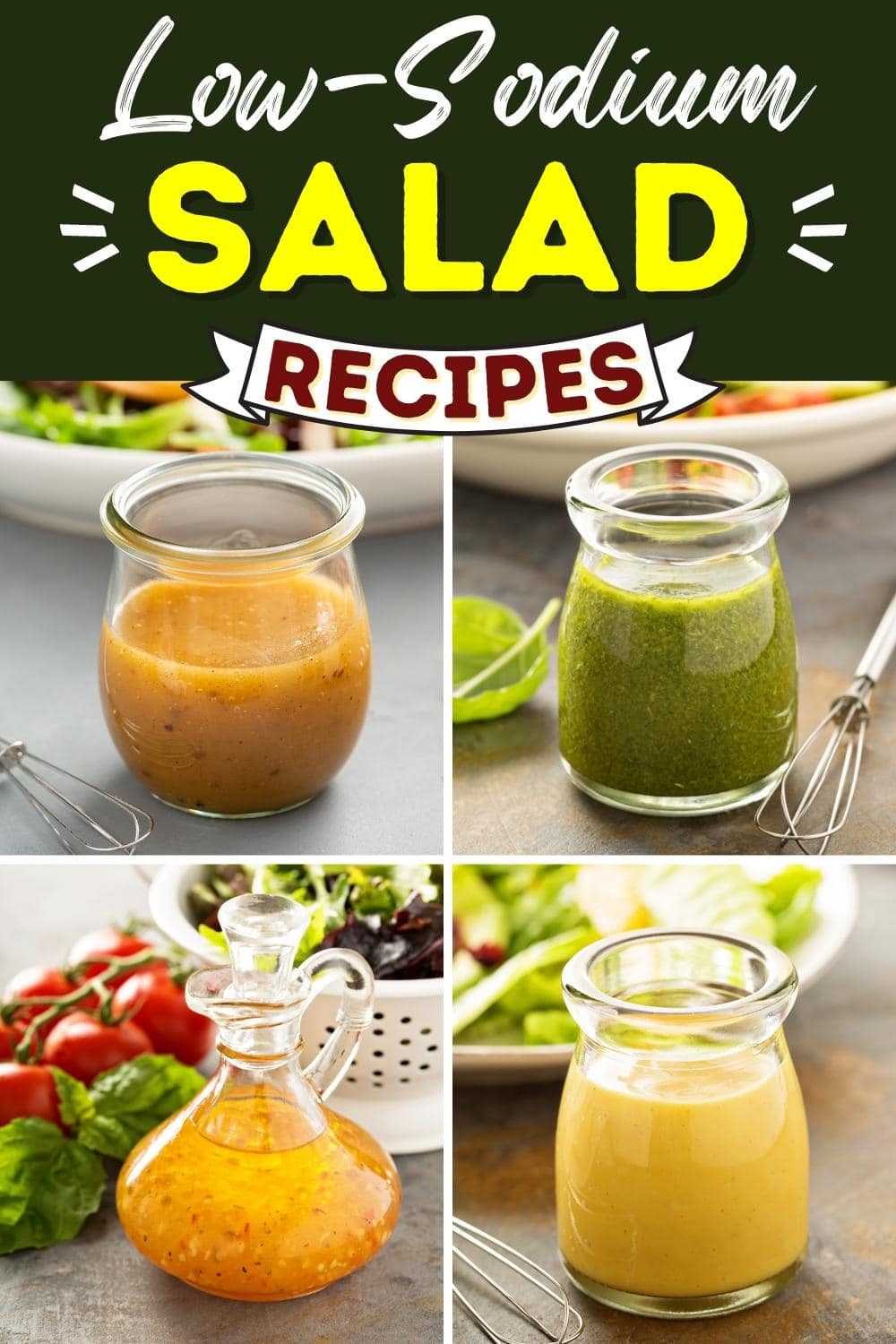
Easy Low Sodium Salad Dressing Recipes Youll Love
Low sodium salad dressing recipes offer delicious ways to enjoy vibrant salads without excessive salt. These dressings balance health and taste perfectly.
Equipment
- Whisk: For emulsifying the dressing ingredients.
- Small Mixing Bowl: To combine the ingredients efficiently.
- Measuring Spoons and Cups: To ensure accurate ingredient proportions.
- Garlic Press or Knife: For mincing garlic finely.
- Cutting Board: For chopping fresh herbs.
- Lemon Juicer (optional): To extract fresh lemon juice effectively.
- Airtight Container or Jar: For storing the finished dressing.
Ingredients
- 1/4 cup extra virgin olive oil
- 3 tablespoons lemon juice, freshly squeezed
- 2 tablespoons water
- 1 tablespoon Dijon mustard (low sodium)
- 2 cloves garlic, minced
- 1 tablespoon fresh parsley, finely chopped
- 1 tablespoon fresh basil, finely chopped
- 1/2 teaspoon dried oregano
- 1/4 teaspoon black pepper, freshly ground
- Pinch of red pepper flakes (optional)
Instructions
- Step 1: Combine the Wet Ingredients: In a small bowl, whisk together the extra virgin olive oil, lemon juice, water, and Dijon mustard until well combined. Ensure the mixture is emulsified, forming a smooth and consistent base for the dressing.
- Step 2: Add Aromatics: Add the minced garlic, fresh parsley, and fresh basil to the bowl. The garlic provides a pungent base, while the herbs contribute fresh, vibrant notes. The herbs should be finely chopped to release their aromatic oils.
- Step 3: Incorporate Spices: Stir in the dried oregano, black pepper, and red pepper flakes (if using). The oregano adds a subtle earthiness, while the black pepper brings a mild heat. The red pepper flakes offer a touch of spiciness for those who prefer a little kick.
- Step 4: Blend Thoroughly: Whisk all ingredients together vigorously until fully incorporated. The dressing should be well-emulsified, with no separation of oil and liquid. Taste and adjust seasonings as needed, adding more lemon juice for brightness or pepper for heat.
- Step 5: Let it Rest: Allow the dressing to sit for at least 15 minutes before serving to allow the flavors to meld. This resting period enhances the overall taste, creating a more harmonious blend of flavors. Optional tip: For a creamier dressing, add 1 tablespoon of tahini or avocado. If fresh herbs aren't available, dried herbs can be substituted, using about 1 teaspoon each of dried parsley and basil.
Notes
Variations
Ingredient Swaps:
- Vinegar Alternatives: Substitute lemon juice with apple cider vinegar or white wine vinegar for a different tang.
- Herb Options: Experiment with various fresh herbs such as thyme, chives, or dill to customize the flavor profile.
- Oil Alternatives: Replace olive oil with avocado oil, grapeseed oil, or walnut oil for unique flavor nuances.
- Sweeteners: A touch of honey, maple syrup, or agave nectar can balance acidity.
- Mediterranean Twist: Add a pinch of dried mint, oregano, or a splash of red wine vinegar.
- Asian Inspiration: Incorporate grated ginger, sesame oil, and a dash of rice vinegar.
- Mexican Flair: Introduce a squeeze of lime juice, a pinch of chili powder, and chopped cilantro.
- Dairy-Free: Use plant-based yogurt or a creamy nut butter (like tahini) for a richer texture.
- Keto-Friendly: Increase the olive oil quantity and minimize citrus juice.
- Sugar-Free: Omit sweeteners or use a sugar alternative like stevia.
Serving Suggestions
This versatile low sodium salad dressing complements a wide array of dishes. It elevates simple green salads, enhances grain bowls, and pairs well with grilled vegetables. Consider drizzling it over roasted chicken or fish for added flavor. For a more substantial meal, the dressing can be used as a marinade for tofu or tempeh. Its vibrant flavor profile also makes it an excellent dip for fresh vegetables or crusty bread.
Storage Tips
To preserve freshness and flavor, store the low sodium salad dressing in an airtight container or jar in the refrigerator. It is best consumed within 3-5 days. The dressing may separate upon standing; simply shake or whisk vigorously before each use to re-emulsify. Avoid leaving the dressing at room temperature for extended periods to prevent spoilage.
Frequently Asked Questions
- Question 1: Can I use dried herbs instead of fresh?Answer: While fresh herbs provide the best flavor, dried herbs can be substituted. Use approximately 1 teaspoon of dried herbs for every tablespoon of fresh herbs.
- Question 2: How can I make the dressing creamier?Answer: Adding a tablespoon of tahini, avocado, or plant-based yogurt will enhance the creaminess.
- Question 3: Can I freeze this dressing?Answer: Freezing is not recommended as the emulsion may break, resulting in a separated texture upon thawing. It’s best to prepare the dressing fresh and store it in the refrigerator.
- Question 4: What if I don’t have Dijon mustard?Answer: A small amount of prepared yellow mustard can be used as a substitute, although the flavor profile will be slightly different. Alternatively, omit the mustard and increase the lemon juice for a tangier dressing.